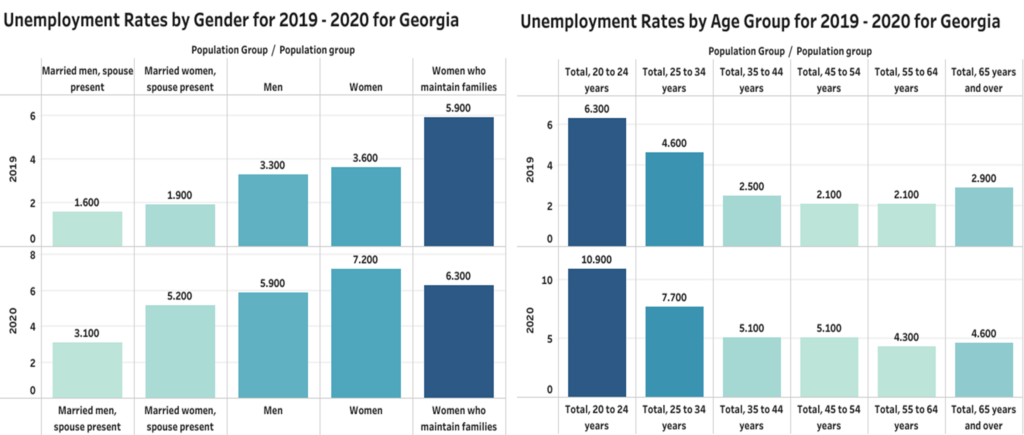ASI – Matching Jobs to Qualified Workers
The purpose of the ARC (Atlanta Regional Commission) is to identify and predict future trends for the region and work with their partners across the community to address the most important issues facing metro Atlanta. Among these issues are providing services for vulnerable and underrepresented communities and developing a competitive workforce. Regional planning has helped metro Atlanta become one of the nation’s largest, most dynamic regions, and a major player on the global stage. The ARC’s member governments are Cherokee, Clayton, Cobb, DeKalb, Douglas, Fayette, Forsyth, Fulton, Gwinnett, Henry and Rockdale counties, and the city of Atlanta.
Maintaining metro Atlanta’s economy and quality of life is key to remaining a leader in the global economy. As such, the ARC has identified ten challenges as being instrumental in reaching the goals of the region. One of these challenges is to match available jobs to qualified workers. While the Atlanta region is a leader in jobs growth, many good jobs are going unfilled. More than half of the advertised jobs in the region require at least a bachelor’s degree, while only 35% of residents over age 25 meet that requirement. At the same time, many residents in the region’s underrepresented and vulnerable communities aren’t getting the skills necessary to land a well-paying job. In addition to this skills gap, some job postings list requirements that aren’t necessary for the job. Both issues must be addressed, as they ultimately affect our regional economy and our ability to attract new industries and jobs to the area.
Our approach for this project included:
- understanding educational attainment necessary for high-growth, high-salary jobs in Georgia,
- looking at the level of on-the-job training that jobs provide,
- understand unemployment trends in the region and in the vulnerable communities,
- factors impacting unemployment in the most vulnerable populations
To analyze current job openings and identify high-growth occupations, data was used from the U.S. Bureau of Labor Statistics as well as the Georgia Department of Labor. Additional data was pulled from WorkSource, and the U.S. Government Census to analyze degree requirements for the high-growth, high-salary jobs in Georgia and the extent of on-the-job training provided by employers in the area.
The Center for Disease Control’s Social Vulnerability Index data (from 2019) was used to identify the most vulnerable of the eleven counties in the region.
Education Requirements for High-Growth, High-Salary Jobs in Georgia
Not surprisingly, the average hourly wage increases as the education required increases. A more interesting insight we derived was that the job growth rate is also directly related to the education required. Therefore, without sufficient education, an individual is not only at risk of getting low compensation but, increasigly, at risk of not being employed period.

On-the-job Training
We analyzed the availability of on-the-job training and noted that jobs compensated at a higher hourly wage (~$32) do not have any on-the-job training. Some apprenticeship opportunities are available at the mid-point hourly range (~$25). At he lowest end of the wage spectrum (~$18), only short term term training is available.

Unemployment Trends
To understand unemployment trends in the region, data was pulled from the Georgia Department of Labor, and an analysis was performed on current unemployment rates by county, gender, and age group.

Unemployment in the Most Vulnerable Populations
We performed a correlation analysis on factors affecting unemployment and the lack of a high school diploma.


Finally, for our job skills analysis, data was aggregated from the following websites: Career Builder, Indeed, Monster, and Simply Hired. After exploring, cleaning, and preparing this data, a feature was added that classified job descriptions into one of three categories based on the educational level required: 1) High School Diploma; 2) Associates degree or higher; 3) No educational requirement explicitly stated. With the cleansed dataset, cosine similarity was used as a distance metric to determine how far different job descriptions that require only a high school diploma or GED are from job descriptions that require more years of schooling. By locating which jobs were close to the decision boundary, we were able to identify those jobs that job seekers without an advanced education are able to perform effectively.
Conclusion
The results of our analysis provided some key takeaways for the ARC to consider that we believe will improve the ability of Metro Atlanta residents (particularly those residing in vulnerable communities) to gain the skills necessary to pursue employment in Atlanta’s high-growth occupations.
Our overall recommendations are to encourage employers to consider the use of education-blind job applications so that those who have the skill set, but not the required degree, for a posted position will have a better opportunity for employment in that position.
To help address the skills gap in the population, we suggest that more be done to support corporations, specifically by expanding and promoting the training resources that are already available to them, so that they may offer more on-the-job training programs to their employees.
And finally, we recommend that more career exploration, training, social support, and transportation resources be targeted toward our vulnerable communities, especially those who fall in the 20-24-year-old age group and women who are head of their household. Key to the success of this final recommendation will be providing easy access to these resource programs by implementing them directly into the communities in which these target demographic groups reside.
